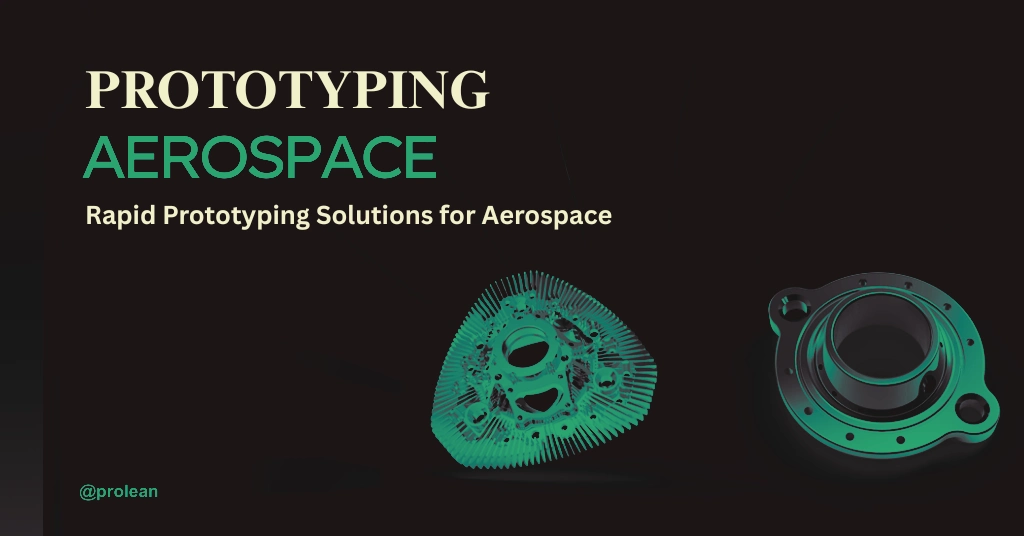
A single design concept took a couple of months for aerospace prototyping. To create multiple parts, aerospace engineers now test ideas quickly using rapid prototyping. Modern techniques such as 3D printing and CNC machining can figure out design issues, which can save both money and time.
Aerospace prototyping services provide high-precision prototyping that cuts costs and resolves design issues in the aerospace and defence sectors. In this guide, we’ll highlight the methods, applications, and materials that make aerospace prototyping the heart of the industry’s future.
What is Aerospace Prototyping?
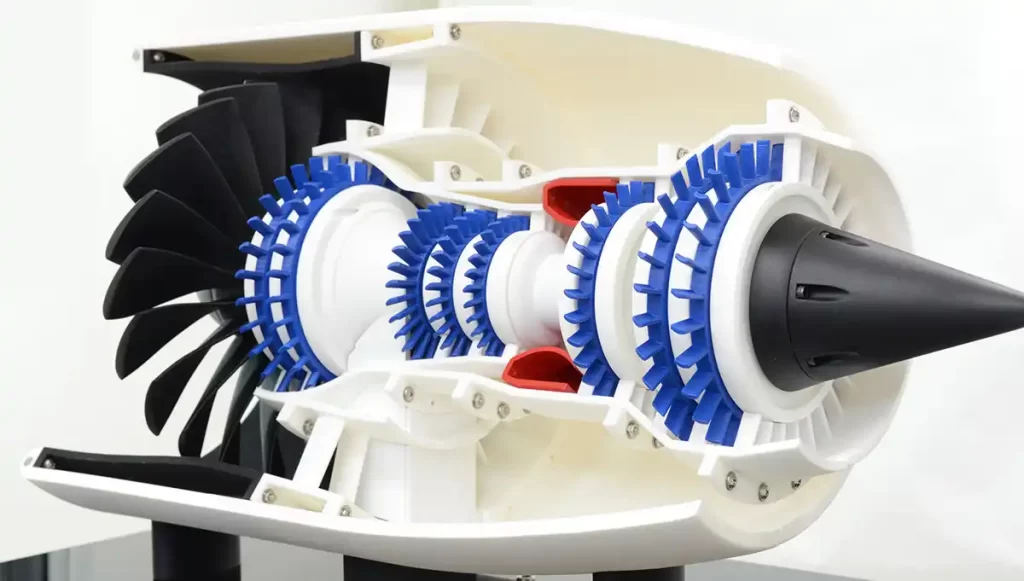
Aerospace Prototyping
Aerospace prototyping is the process of designing and creating sample parts and systems for spacecraft. It is like a test version that helps engineers see what works and what doesn’t. It increases performance and safety for aerospace product development.
Rapid prototyping companies identify early flaws and make improvements accordingly in a better way. They use high-precision prototyping techniques needed in aerospace to test design functionality and refine it to meet safety standards. Aerospace prototyping quickly turns ideas from physical testable parts into the sky.
Try Prolean Now!
Prototyping Methods in the Manufacturing Aerospace Industry
In the aerospace manufacturing industry, there’s no single way to build a prototype. Depending on the part, material, and function, different projects need different tools and processes. But the main goal is to create accurate, testable parts that match real-world performance.
Rapid Prototyping

Rapid Prototyping
This technique was first initiated in the 1970s to convert computer-aided designs (CAD) to physical models. It uses advanced machines to produce parts in days, without long delays. Using rapid prototyping, engineers can assess aerospace conditions such as thermal resistance, pressure, heat, and more.
Some traditional methods cannot work for intricate channels; there, rapid prototyping produces intricate custom aerospace parts like combustion chambers and nozzles quickly.
Aerospace manufacturing industries use this method to get products to the air in less development time. This prototyping does not require additional fixtures or molding, which results in low production cost.
3D Printing for Aerospace
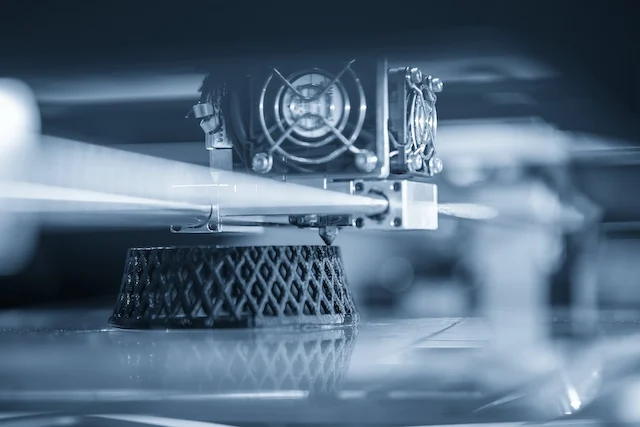
3D printing for aerospace
3D printing (additive printing) builds parts layer by layer from durable materials such as metal, plastics, and other lightweight materials. This method creates lightweight but strong components such as air ducts and complex engine parts.
Its setup cost is lower than the other conventional methods. 3D printing plays a vital role in dimensional accuracy and precision in manufacturing in the aerospace industry.
Additive prototyping can prototype complex designs and craft unique and specialized components. It’s widely used for custom aerospace parts, including interior fittings, air ducts, and even small structural components.
CNC Machining for Aerospace
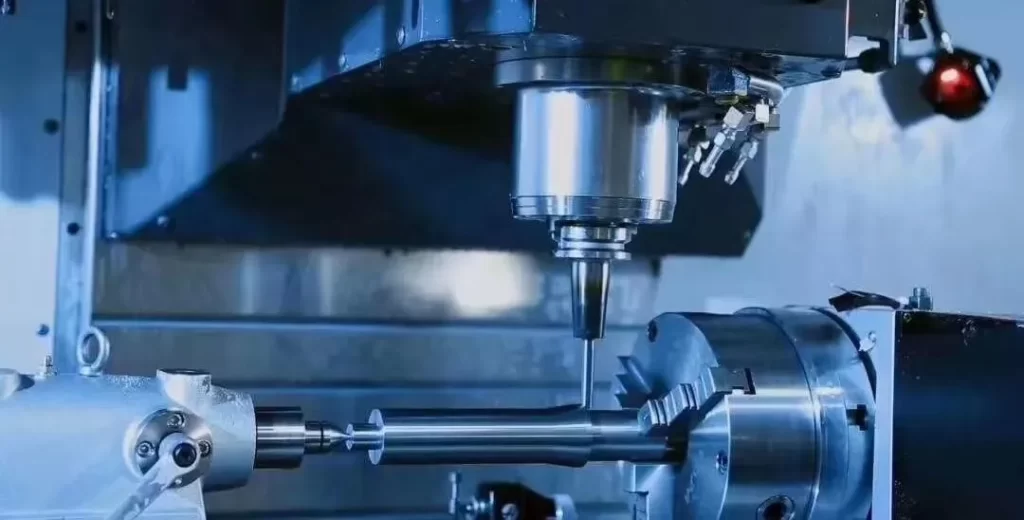
CNC Machining for Aerospace
CNC machining is also called subtractive manufacturing (opposite to 3D printing), where the machines precisely cut the material from solid blocks. Tolerances are extremely tight to meet safety and performance standards in aerospace CNC machining and aerospace CNC milling.
As aerospace cannot afford errors, CNC machining components are crafted with high precision. It eliminates mistakes and ensures accuracy in final products.
Aerospace CNC milling and CNC machining work with different materials, from lightweight aluminum to titanium. CNC milling can also work with superalloys like stainless steel. CNC prototyping allows for various materials for aerospace applications.
Prototype Machining & Custom Aerospace Parts
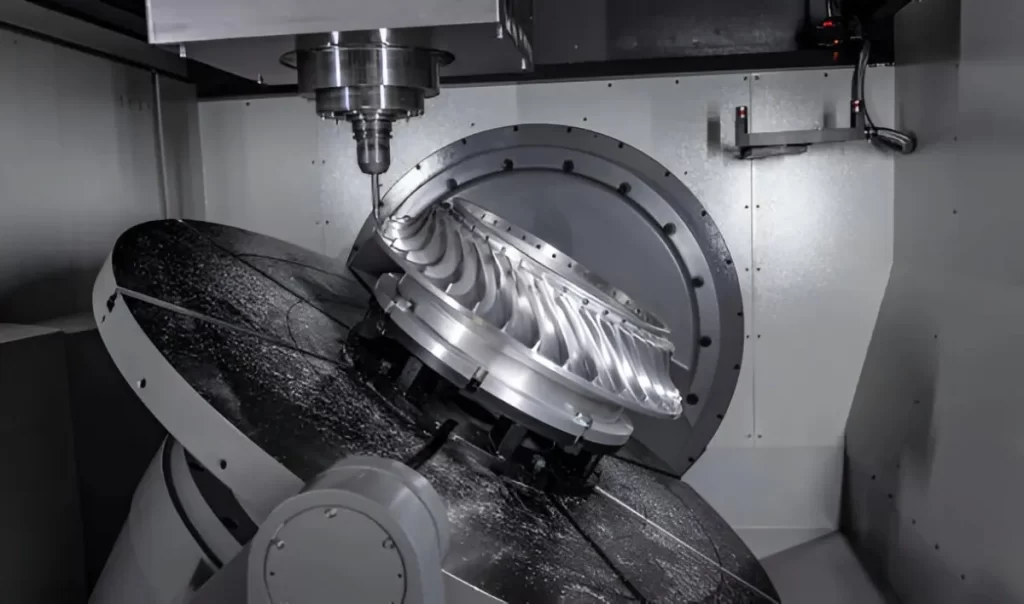
Custom Aerospace Parts
Sometimes, custom aerospace parts are needed to test unique designs for spacecraft. Prototype machining allows the parts to fit perfectly and meet safety requirements before mass production begins.
In this method, aircraft sectors minimize the inventory cost and enhance flexibility in specific design. It allows engineers to meet exact specifications and function flawlessly before mass production.
How Does Rapid Prototyping Benefit Aerospace Projects?
Traditional manufacturing took months to produce a test part, but time and speed are as valuable as precision. Rapid prototyping plays an important role in speedy production during aerospace product development.
Some extreme conditions, such as speed, intense pressure, or extreme temperatures, if not tested, can destroy the entire aerospace sector. But with rapid prototyping, engineers can tackle these challenges and they can design, test and refine parts before full-scale production.
Many companies avoid expensive rework during the production phase. It identifies the material that fits the production needs efficiently, thus wasting less. For example, a complex aircraft component made through high-precision prototyping can be tested for fit, function, and performance, which benefits in cost savings.
Last but not least, a benefit of rapid prototyping in aerospace projects is innovation. Manufacturers continuously experiment with new designs, materials, and manufacturing methods, such as 3D printing and aerospace CNC machining. This flexibility allows the rapid prototyping service providers to stay competitive in the aerospace industry.
Benefits of Aerospace Prototyping Services
Aerospace Prototyping Services
The success of the project lies in selecting the right aerospace prototyping services, which can make all the difference between a smooth product launch and costly delays.
The right service providers have access to advanced machining skills and aerospace engineers to ensure every part meets strict industry standards. Some of the key benefits that an aerospace prototyping service can provide are
- High Precision and Accuracy
The first benefit that an aerospace prototyping service can provide is high-precision prototyping. They perform aerospace parts under extreme conditions such as high speeds, temperature changes, and intense pressure for accuracy.
- Fast Development Cycles
Rapid prototyping helps companies to produce and test the custom parts in less time than traditional methods. They provide multiple design iterations in project timelines.
- Risk Reduction
Another major benefit is the risk reduction that the aerospace industry can’t afford. Engineers can test how a part will work under intense conditions through functional application prototyping services.
- Custom Aerospace Parts
Many aerospace projects require unique custom parts. Prototyping services allow the create of custom aerospace parts that perform best for specific requirements, weight, and durability.
Try Prolean Now!
What are the Applications of Rapid Prototyping in Aerospace Industries?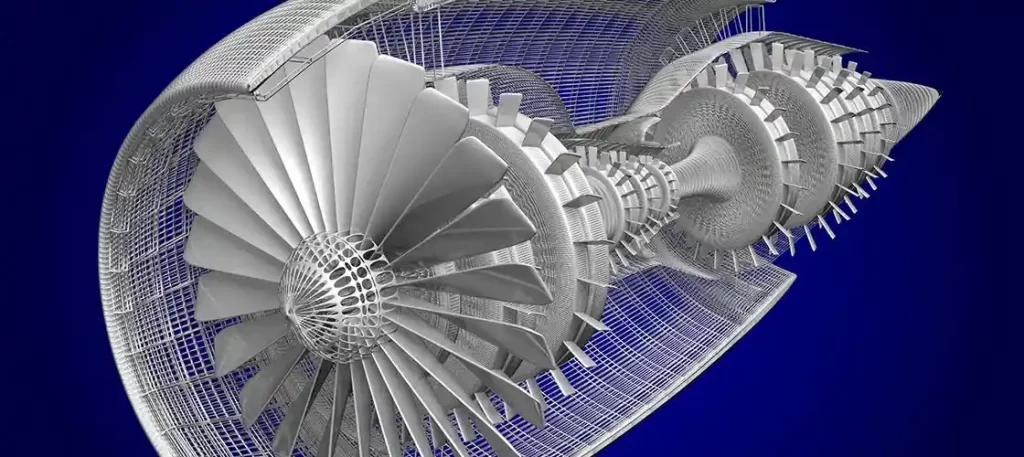
Applications of Rapid Prototyping in Aerospace
Rapid prototyping serves a critical role in aerospace sectors across many stages of aerospace product development, from concept testing to final production validation. Some of the applications are below, but are not limited to:
- Cabin Interiors
Prototypes are also used for seating, control panels, lighting fixtures, and other interior features. This helps in enhancing comfort, safety, and space optimization for passengers and crew.
- Custom Satellite Components
Antenna mounts and sensor housing allow for scheduling space missions without waiting for the manufacturing process.
- Engine Components
Most of the aerodynamic surfaces of jet engines and rocket motors are made with complex geometry. These surfaces are tested to check the internal structure and the efficiency of aerodynamics at a large scale. 3D printing of aerospace creates intricate cooling channels and fuel system components that are not possible with traditional manufacturing.
- Avionics and Cockpit Interfaces
Prototyping is useful in electronic systems for fitting and testing control panels and pilot interface systems under operating conditions.
- Maintenance and Upgrades
Some wear-and-tear parts need repairs on the spot; the use of rapid prototyping makes it possible to produce replacement parts.
- UAVs and Drones
Unmanned Aerial Vehicles (UAVs) require rapid design changes to improve performance for the specific mission. For this purpose, rapid prototyping, 3D printing and aerospace CNC machining are used for rapid production of lightweight brackets, aerodynamic bodies, propellers, and sensor mounts.
Materials Matter for Aerospace Parts
Lightweight materials are the best choice for complex and intricate parts in the aerospace and defence sectors. Modern metal additive technologies have increased the growth of the overall additive manufacturing sector.
These technologies, such as L-PBF (Laser Powder Bed Fusion), DMLS (Directed Metal Laser Sintering), DED (Directed Energy Deposition), Carbon DLS, Stereolithography, Multi Jet Fusion and PolyJet, are creating parts with different metals. These processes manufacture parts with materials such as aluminum, Inconel, liquid silicon rubber and many more. Below are some materials that are mostly used.
- Aluminum Alloys
Lightweight yet strong, aluminum is good for prototype machining in the aerospace industry. It is the most cost-effective for housing and brackets that should support high loading.
- Titanium Alloys
Its strength-to-weight ratio and heat resistance capacity make it essential for functional application prototyping services, especially in jet engines, landing gear, and high-stress aerospace assemblies.
- Stainless Steel
316 Stainless steel is widely used due to its high corrosion resistance. 304 stainless steel is also preferred for cost-effective solutions and high strength. It is useful for tooling, testing, and mock-ups.
- Inconel and Other Superalloys
The nickel-chromium superalloy is a 3D-printed metal, best for extreme environments such as rocket engines that require high-temperature resistance.
- Carbon Fibre Composites
Carbon fibre provides high stiffness with minimal weight, which enables more aerodynamic aircraft bodies and makes them fuel-efficient.
What are the Challenges of Aerospace Prototyping?
As the aerospace industry demands expertise and precision, it comes with several challenges. Here are some core challenges that the aerospace industry is facing today:
- Stringent Safety Quality Standards
Aerospace components are manufactured under strict regulations. A small variation can result in delays and increase costs.
- High Development Costs
The advanced techniques (3D printing and aerospace CNC machining) and the materials add development cost.
- Design Complexity
Aerospace parts require intricate geometries for accuracy in prototyping stages. The Intricate channels and complex geometry demand expertise in prototyping methods.
- Zero Margin for Error
Even with rapid prototyping, unexpected design flaws or manufacturing issues can slow down the project, which the industry can rarely afford.
Conclusion:
Rapid prototyping is transforming with the rapid growth in aerospace product development. With techniques like CNC machining, 3D printing, and composite layups, engineers can test components faster than ever before.
Turning ideas into a fully designed prototype took days and even months. Through the rapid prototyping services, manufacturers test and identify which works better and make changes accordingly without delays.
As the aerospace industry works with zero margin for error, the precision in every stage of aerospace prototyping is non-negotiable. The future of rapid prototyping in aerospace is marked by performance, safety, sustainability, and innovation.
FAQs
Which materials are best for aerospace prototyping?
Aluminum and titanium are the best and most widely used materials for aerospace prototyping. These materials offer a good strength-to-weight ratio, heat resistance, and stress handling.
How is rapid prototyping used in aerospace?
Rapid prototyping is widely used in aerospace. The high-fidelity and low-fidelity prototypes that resemble the final product and concept verification are beneficial in the aerospace sector. It includes 3D printing, early design validation, and aerodynamic testing.
What are the advantages of CNC machining in aerospace?
CNC machining is beneficial for prototyping. It allows the creation of complex aerodynamic shapes and lightweight structures. It provides the flexibility to work with different materials and find the best one.
What is the difference between functional application prototyping and rapid prototyping?
A functional prototype represents the products that allow engineers to evaluate performance and functionality.
Rapid prototyping allows manufacturers to design iterations, visual models, and non-functional testing without delays.

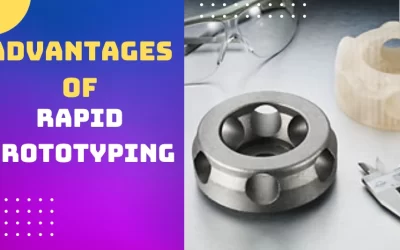


0 Comments